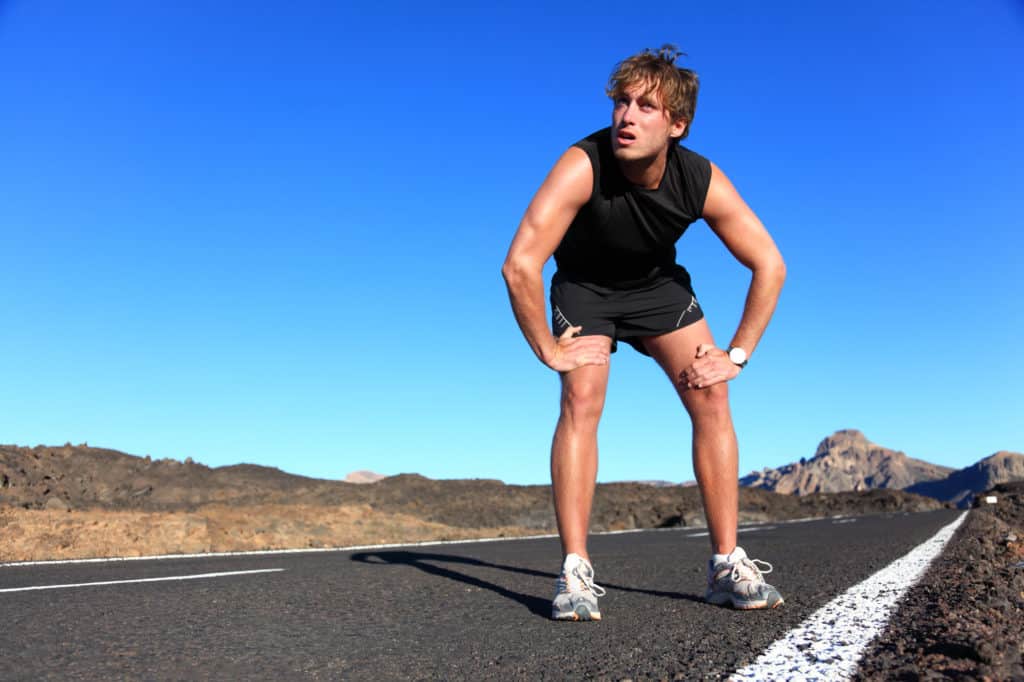
Do you feel like you might be ready to exercise again after Long COVID?
Physical activity and exercise are one of the main pillars of a healthy lifestyle, so getting moving again should always be a priority after an illness.
But with long COVID, things aren't that simple. While you probably want to get active again and get back to sports, fitness classes, or other activities.
We know that when you're suffering from the effects of long COVID, even walking up and down the stairs is a colossal task that feels like the same effort level as running a marathon.
During an active COVID infection and for weeks, months, and sometimes years afterward (if you’re unlucky enough to be struck down by long COVID).
Your body gradually gets weaker as it fights the infection and battles the lasting symptoms of fatigue, joint pain, and breathlessness, amongst many other painful and debilitating symptoms.
When you’re convalescing, you also move less than you do under normal circumstances when you’re well.
Your muscles lose strength, and your cardiovascular fitness also worsens (especially if you have heart or lung problems as a lasting effect of COVID and/or Long COVID).
So, where do you start getting back to exercise after long COVID, and is it safe?
Once you get over COVID and are finally better, the big question is when and how to begin your regular exercise routine. Unfortunately, there still are scores of individuals testing positive for Covid daily.
While the symptoms may not be as severe, even a mild strain can bring your exercise routine to a grinding halt.
Remaining inactive for long periods leads to a loss of strength. It causes the aerobic ability of your body to weaken as well.
When you’re unwell with Covid, it is a double whammy as the entire body will be weakened and fatigued trying to beat the infection.
When your body is in this state, any attempt to get back to exercising will have a negative rather than positive impact. With long COVID, you could be in this situation for many months/years.
If you are planning to start exercising after long Covid, like with any illness, you need to carefully create an exercise plan, preferably in consultation with a physical therapist, to ensure that you don't make things worse and exacerbate your symptoms.
Unfortunately, when you're starting out, you need to practice self-restraint to a certain extent, too, because getting gung-ho about it and overexerting yourself will not have a positive outcome.
From the outset of starting exercise again, try to keep your expectations low. Do not expect the same endurance and stamina levels when working out or running as you did before you were sick. However, don't get disheartened, either.
More Articles From Apex
Do I Need Physical Therapy?
What Is Causing Pain In My Shoulder?
How Can I Sleep With Lower Back Pain?
Things will get back on track.

You just need a little time and a lot of patience.
Understandably, if you’re used to an active lifestyle, taking it easy and “not doing too much” can be a challenge.
However, after undergoing a COVID infection and subsequent Long COVID, it’s worth making an effort to dig deep to find more patience until you are strong enough to exert yourself like you used to again.
This strategy will pay dividends in the end and allow you to get back to normal much quicker than doing too much too soon.
Important Points To Consider Before Exercising Post-COVID

Patience is the key to regaining your lost momentum when exercising after COVID. Why? Because getting back to training at full pace will take a while, and the timescale will be specific to you and your Long COVID symptoms.
Deciding when to resume physical exercise is subject to your symptoms and the severity of your initial infection.
But it's human nature to want to get back to your routine and usual sporting achievements. So it's easy to overdo it without realizing what a negative impact it can have.
Therefore, your symptoms should be the benchmark for planning your physical activity.
In the case of no to mild COVID symptoms. It's best to wait for a couple of days.
Then, at least two weeks before you get back to exercise because your body is likely still fighting the remnants of the infection (even if you test negative).
If you exercise too soon, you'll be overtaxing your body, which could lead to serious health issues in the long term.
Even if you're asymptomatic, doctors recommend you take a 2-week break starting from the date you test COVID-positive.
After that, gentle walking is fine, but avoid any activity that raises the heart rate too much.
Even if you work out actively normally and were in peak physical condition before COVID, you need to take it easy for the first few times you exercise again.
Try to adjust your training plan and goals to prevent putting too much stress on your weak body and immune system.
You may have been working out intensely at the gym or been a CrossFit addict, whatever. Still, you must reevaluate your goals and objectives after a COVID infection.
Getting Back To Exercise After Long Covid

After experiencing fatigue and other symptoms of Long COVID for a long time (which is different for everyone), you will gradually start to feel like you have some spare energy for exercising again.
Here are our tips for gradually picking up the tempo after starting from scratch after Long COVID:
Walk before sprinting:
It doesn't matter whether you are accustomed to jogging or sprinting. You need to put things on hold for the moment. Initially, start with a walk at a brisk speed for 20-25 minutes while keeping your heart rate up in zone one.
You should not get breathless or fatigued. If you do, slow down and take a casual stroll instead. After long COVID, even something as non-taxing as a non-strenuous stroll can make you weary.
Focus on recovery:
Feeling weak and tired the first few days back, exercising is 100% normal. Just make sure that you get ample recovery time.
In fact, for the first two weeks, you could start walking on alternate days with a day of rest in between so that your body gets back into recovery mode. Combine walking with a few stretching movements.
Wait before reintroducing cardio:
After around two weeks of walking and light exercise, consider switching to higher-intensity cardio if you feel well enough.
After developing any viral infection like Covid, the body's immune system is weak. Your muscles also lose their endurance and strength and tend to develop soreness much faster.
Pushing the envelope while doing high-intensity exercise increases the risk of an injury like a ligament/tendon rupture or a tear.
Focus on low-intensity cardio workouts and continue with the same routine for at least 10-14 days before increasing the intensity.
Other activities that are low-intensity include cycling, swimming, and light jogging. Save high-intensity workouts and weight training for when you feel 100% fit to go all out.
Monitor your heart rate:
One of the best ways to ensure you exercise appropriately after Long COVID is to monitor your heart rate regularly.
It will give you a good idea of how you compare with when you were fit. Generally, the heart rate is elevated after we resume exercises after an illness.
So, make sure that any workout you do does not raise the heart rate too much to avoid any pressure and stress on the body before it is ready.
Even when working with cardio, limit it to 50% of what you would normally work out. Also, keep the cardio exercising time shorter in duration, e.g., instead of 30 minutes, cap it at 15 minutes.
Gradually pick up the tempo:
Once you are comfortable with low-intensity workouts for around two weeks with a positive body response, you may gradually increase the intensity.
For example, from the usual 50%, aim for 60% every 10 -14 days. Do not aim for 100% straight away, especially with high-intensity workouts.
You don’t want to pick up another injury or medical condition. Instead, bump your activity up slowly every two weeks or so until you get back to your normal fitness levels.
Don't Let Covid Keep You Down

If you would like some help planning your return to exercise or overcoming joint pain, breathlessness, and other lasting physical symptoms of Long Covid, we can help.
We also offer all new patients a complimentary first appointment to discuss your symptoms and learn more about how we can help you.
So, there is no financial investment on your part until you're confident about going ahead. You can book your free appointment here.


